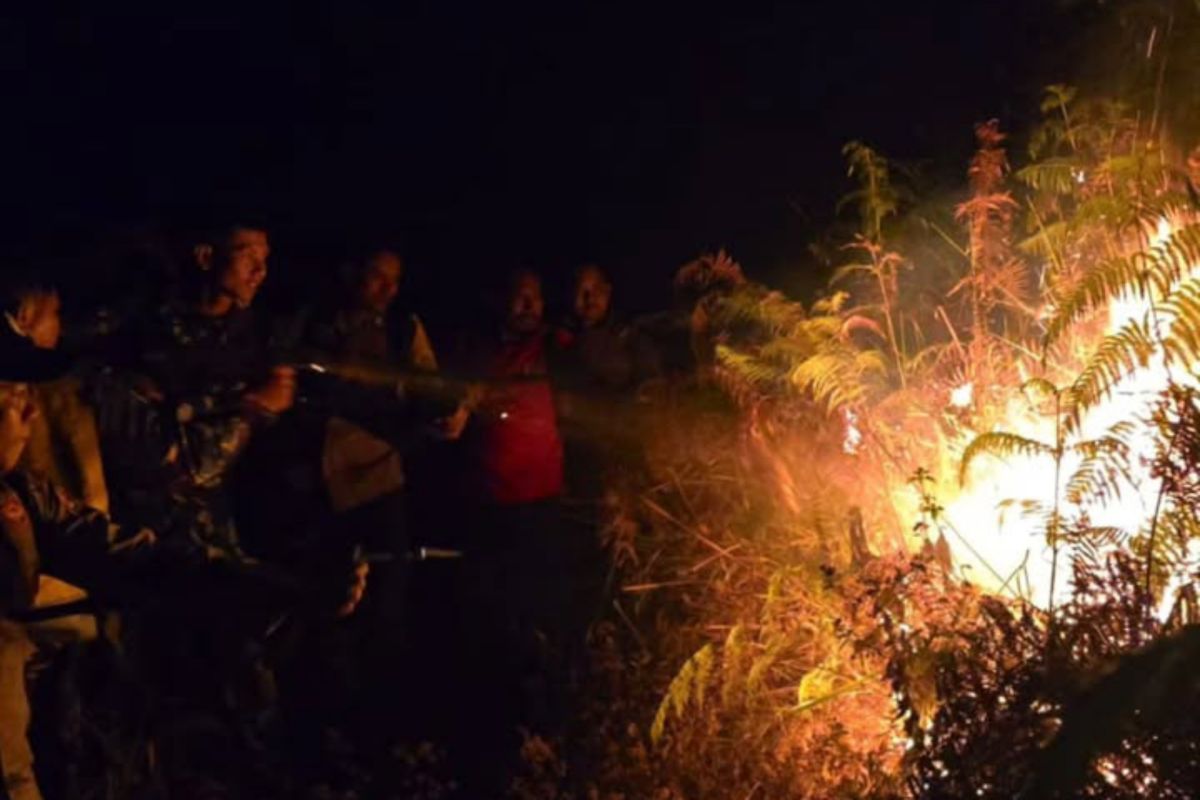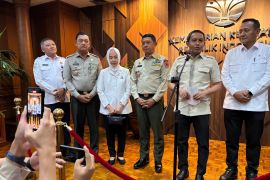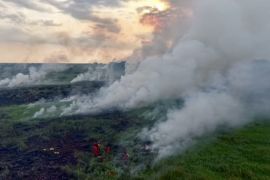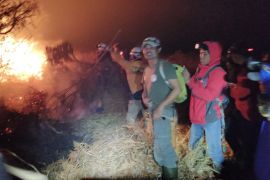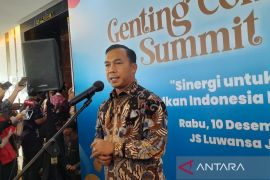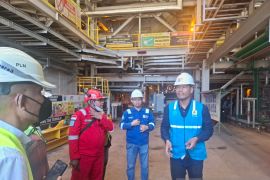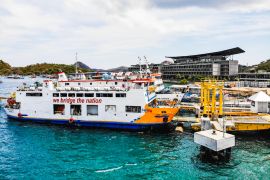According to the TNGR Office, the fire broke out on Thursday, October 16, 2025, at around 3:45 p.m. Central Indonesia Time.
Head of the TNGR Office in West Nusa Tenggara, Yarman, said the blaze was a surface fire that burned shrubs, grass, undergrowth, and dry leaves.
“After remote monitoring, hotspots were detected, and officers immediately coordinated with the local Military Command, Police Sector, and Fire Post in Sembalun,” he said in a written statement in Mataram on Friday.
Yarman explained that several types of vegetation in the area were affected, including bakbakkan trees, mountain pine, saropan, and acacia decurrens. The fire spread rapidly due to strong winds and the steep terrain.
Upon receiving reports from residents, a joint team of 20 personnel was deployed to the site at around 6 p.m. The team consisted of TNGR officers, the Military Command, the Police Sector, the Fire Post, the Fire Concern Community (MPA), the Forest Ranger Partner Community (MMP), and university students.
They brought firefighting equipment such as fire retardants, backpack pumps, machetes, hoes, shovels, and a water tanker from the Sembalun Sub-district Fire Post.
Firefighters worked intensively through the night to extinguish the blaze. The fire was successfully contained, and by Friday morning no smoke or hotspots were detected.
The joint team will continue patrols and field checks to ensure the fire is completely extinguished.
Yarman expressed his appreciation to all parties involved in controlling the wildfire within the conservation area. He also called on the public to help preserve the Rinjani area for the common good.
Mount Rinjani National Park (TNGR) is a protected conservation area located on Lombok Island, West Nusa Tenggara Province. It was designated as a national park in 1997 and is managed by the Mount Rinjani National Park Office under the Ministry of Environment and Forestry.
The park covers an area of about 41,330 hectares, spanning the East Lombok, Central Lombok, and North Lombok Districts. It includes Mount Rinjani, an active volcano rising 3,726 meters above sea level, making it the second-highest mountain in Indonesia after Mount Kerinci in Sumatra.
One of the park’s main attractions is Segara Anak Lake, a crater lake located at an elevation of around 2,000 meters. In the middle of the lake stands Mount Barujari, an active volcanic cone often called the “Child of Rinjani.” The area is renowned for its stunning landscapes, challenging hiking trails, and rich biodiversity.
The park serves as a vital habitat for various endemic flora and fauna of the Wallacea region. It is home to more than 500 plant species, including edelweiss (Anaphalis javanica), mountain pine, and several species of wild orchids.
Wildlife found in the park includes the ebony langur (Trachypithecus auratus), deer, porcupines, the Flores hawk-eagle, and a variety of reptiles and amphibians.
Beyond its ecological significance, Mount Rinjani holds deep social and spiritual value for local communities. The mountain is considered sacred by some Sasak and Balinese people. Every year, local residents perform the “Pekelem” ritual at Segara Anak Lake as an expression of gratitude and respect for nature.
Economically, TNGR plays a key role in supporting Lombok’s ecotourism. Popular trekking routes such as Sembalun, Senaru, and Torean serve as main gateways for both domestic and international visitors.
These nature-based tourism activities provide income for local communities through guiding services, porters, transportation, and accommodation.
Related news: Indonesian govt credits tech, joint efforts for wildfire decline
Related news: Indonesia ends 2025 forest fire operations as risk subsides
Translator: Primayanti
Editor: M Razi Rahman
Copyright © ANTARA 2025
